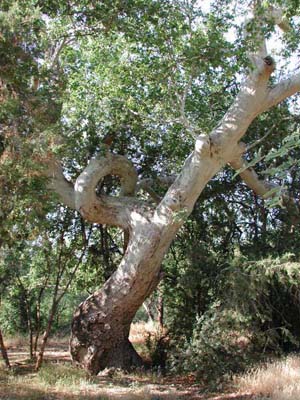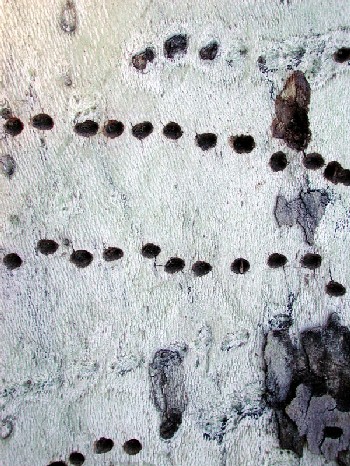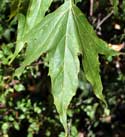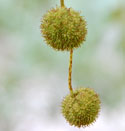Arizona Sycamore
Platanus wrightii

Every sycamore presents a unique visual history of it's survival battles: Twisted and gnarled branches; dead limbs; hollowed trunks and numerous nest hole cavities. The smooth white bark gives it a very stately look.

Close-up of sycamore trunk showing drilled holes made by the Red-naped Sapsucker (Sphyrapicus nuchalis), a kind of woodpecker. Sycamore trees are not a prefered host for sapsucker drilling. Normally these woodpeckers make the holes then return again and again as the oozing sap provides food and attracts insects which also serve as food. Cottonwoods are a more common tree for sapsuckers to use in Arizona.
 TREE: Grand tree reaching
very large proportions.
Arizona champion is 21 m tall
and has a crown spread of 22 m.
TREE: Grand tree reaching
very large proportions.
Arizona champion is 21 m tall
and has a crown spread of 22 m.
LEAVES: Leaves are hand shaped and can be up to 30 cm across. Young
leaves are velvety, esp. beneath.
RANGE: Strictly riparian. Found along permanent creeks mostly above 750
m elevation in Arizona and Sonoran, Mexico. This tree is probably conspecific
with sycamores in California.
FLOWERS/FRUIT: Petal-less flowers and achenes are small and are borne on
a densly packed spherical structure about
3 cm in diameter. These clusters are arranged into pendant
chains of three or more.

TRUNK: Whitish bark peels off in patches giving the trunk a distinctive
light-colored, mottled appearance. Prone to developing large holes from
injuries and broken-off branches thus providing nest spots for many animals and
birds.